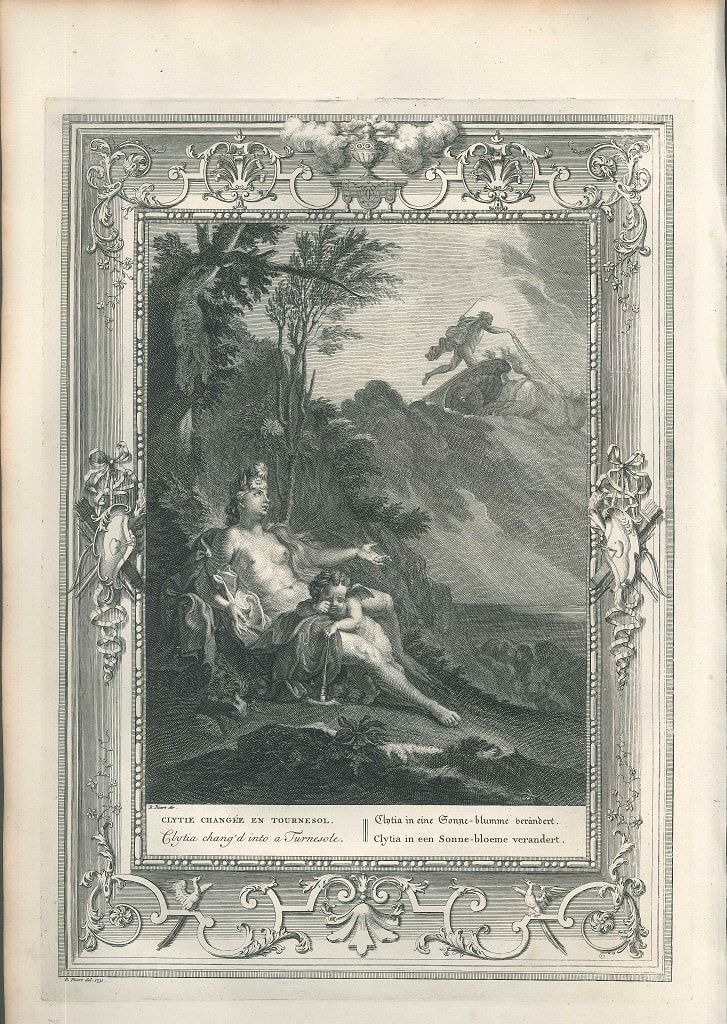ANTONIO RAIMO GALLERY
Picart, Mythology, Temple of Muses, Clytia
Picart, Mythology, Temple of Muses, Clytia
Couldn't load pickup availability
Let's explore the connections between Bernard de Montfaucon (Picart), mythology, the Temple of the Muses, and the figure of Clytia:
1. **Picart (Bernard de Montfaucon)**:
Bernard de Montfaucon, also known as Picart, was a French scholar and antiquarian of the 18th century. He is celebrated for his extensive work in archaeology, classical studies, and art history, particularly for his detailed illustrations and descriptions of ancient artifacts and architectural remains.
2. **Mythology**:
Greek mythology comprises a rich tapestry of tales involving gods, heroes, and mythical beings that explain natural phenomena, human behavior, and the origins of cultural practices.
3. **Temple of the Muses**:
In Greek mythology, the Muses are nine goddesses who inspire the arts and sciences. Temples dedicated to the Muses were centers of artistic and intellectual pursuit in ancient Greece, where poets, musicians, and scholars sought creative inspiration and guidance.
4. **Clytia**:
Clytia is a lesser-known figure in Greek mythology. She was a water nymph and the daughter of Oceanus and Tethys. In Ovid's *Metamorphoses*, Clytia fell in love with the sun god Apollo. However, her love was unrequited, and she pined away, transforming into a heliotrope (sunflower) that turns its head to follow the sun's movement across the sky.
**Connecting the Elements**:
- **Picart’s Work and Mythological Depictions**: Picart's detailed illustrations of ancient artifacts likely included depictions related to mythology, though perhaps not specifically Clytia. His work provides insights into how mythological themes and figures were visually represented in ancient art and architecture, reflecting their cultural significance.
- **Temple of the Muses and Clytia**: While Clytia is not directly associated with the Muses, her story embodies themes of unrequited love and transformation, which were common motifs in Greek mythology. Temples dedicated to the Muses would have been places where such myths were recounted and celebrated, inspiring artistic expressions and philosophical reflections on love, beauty, and nature.
- **Cultural Context and Interpretation**: The study of Clytia within the context of Picart’s work and the Temple of the Muses offers a glimpse into how lesser-known myths contributed to the broader cultural narrative of ancient Greece. These stories, often intertwined with natural elements and celestial phenomena, served as allegories for human experiences and emotions.
In summary, Bernard de Montfaucon’s (Picart’s) scholarly contributions provide valuable perspectives on how myths like that of Clytia were depicted and understood in ancient Greece. His meticulous studies of ancient artifacts and temples enrich our understanding of the cultural and artistic dimensions of mythological narratives within places of intellectual and creative exploration such as the Temple of the Muses.

-
Shipping
Share the details of your shipping policy.
-
Returns
Share the details of your return policy.
Image with text
Pair text with an image
Pair text with an image to focus on your chosen product, collection, or artist. Add details on availability, style, or even provide a review.
Image with text
Pair text with an image to provide extra information about your brand or collections.

